So, that’s it! You’ve decided. You’re going to spend your next holidays in Oman. You’ve even bought the ticket! But now it strikes you…You have NO idea what to pack for Oman! Should you go for the minimalist approach and just pack 3 black T-shirts (black’s always good, right?) and an extra pair of trousers? Or, in a swooping movement, fill your suitcase to the brim with all the clothing items you own…just in case?
This Oman packing list for men and women proposes a systematic approach so that you have all you need – without having to haul around the unnecessary extras. It covers all seasons, regions, and essentials for city excursions and activities like hiking, wadi swimming, and desert camping.
Through trial and error in the four years I’ve lived and travelled in Oman, I’ve discovered what works – and what doesn’t – in terms of packing. And I share with you my tips so that, with this Oman packing list, you’ll know exactly what to pack to stay prepared — no matter when or where you visit.
Adapting to the climate and the culture
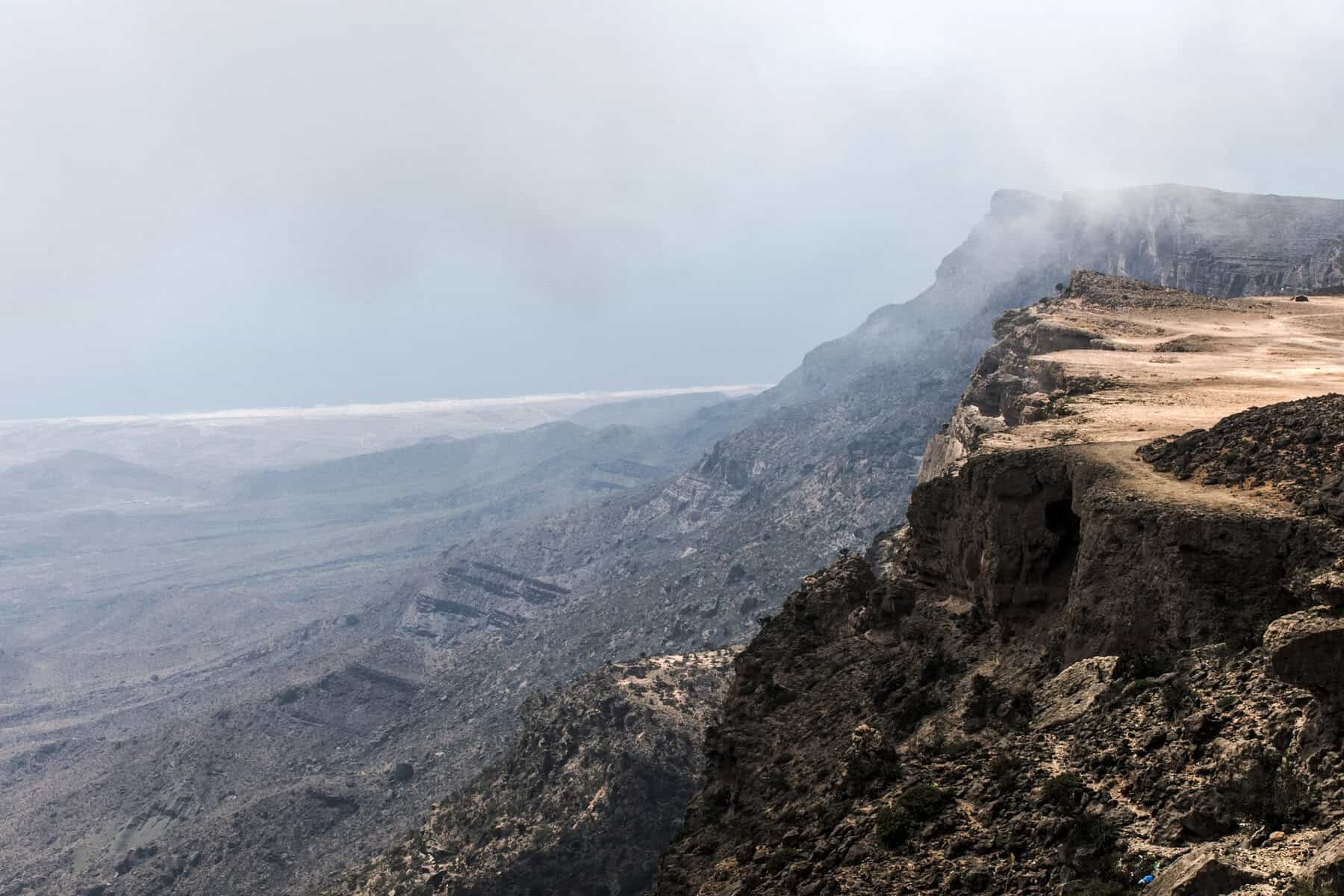
A word about the climate. Oman’s location between the Arabian Peninsula and the Indian Ocean, along with its mix of mountains, deserts, and coastline, creates a variable climate. Coastal areas are humid. deserts are scorching by day and cool at night, and the mountains can be surprisingly chilly, especially in winter.
Oman is tropical and basically has two seasons: summer (from April to November) and winter (from December to March).
Summers are extremely hot and humid with temperatures rising to 50° in most regions (yes, Oman is one of the hottest countries in the world!). The region of Dhofar in the south is the only part of the country that has a Monsoon season (called Khareef) between June and September. During that time, the weather is misty/foggy and temperatures range between 20° and 27°. For this reason, many Omanis spend some time in Dhofar during Khareeef to find a refreshing escape.
Winters are very pleasant and much drier. In general, temperatures are between 20° and 30°. This year (in 2025), we witnessed some cooler weather with temperatures sometimes going down to 13° but this is unusual. Around Jabel Akhdar and Jabel Shams, you will find colder weather and I have witnessed ice and even snow (very rare) there.
All of these elements are important when deciding what to wear. What’s more, if you want to be sensitive to the culture, it’s important to be aware of local dress codes. I often read or see misinformation about this. See further for information about this.
Luggage Tips for Travelling to Oman: Suitcases, Backpacks, and More
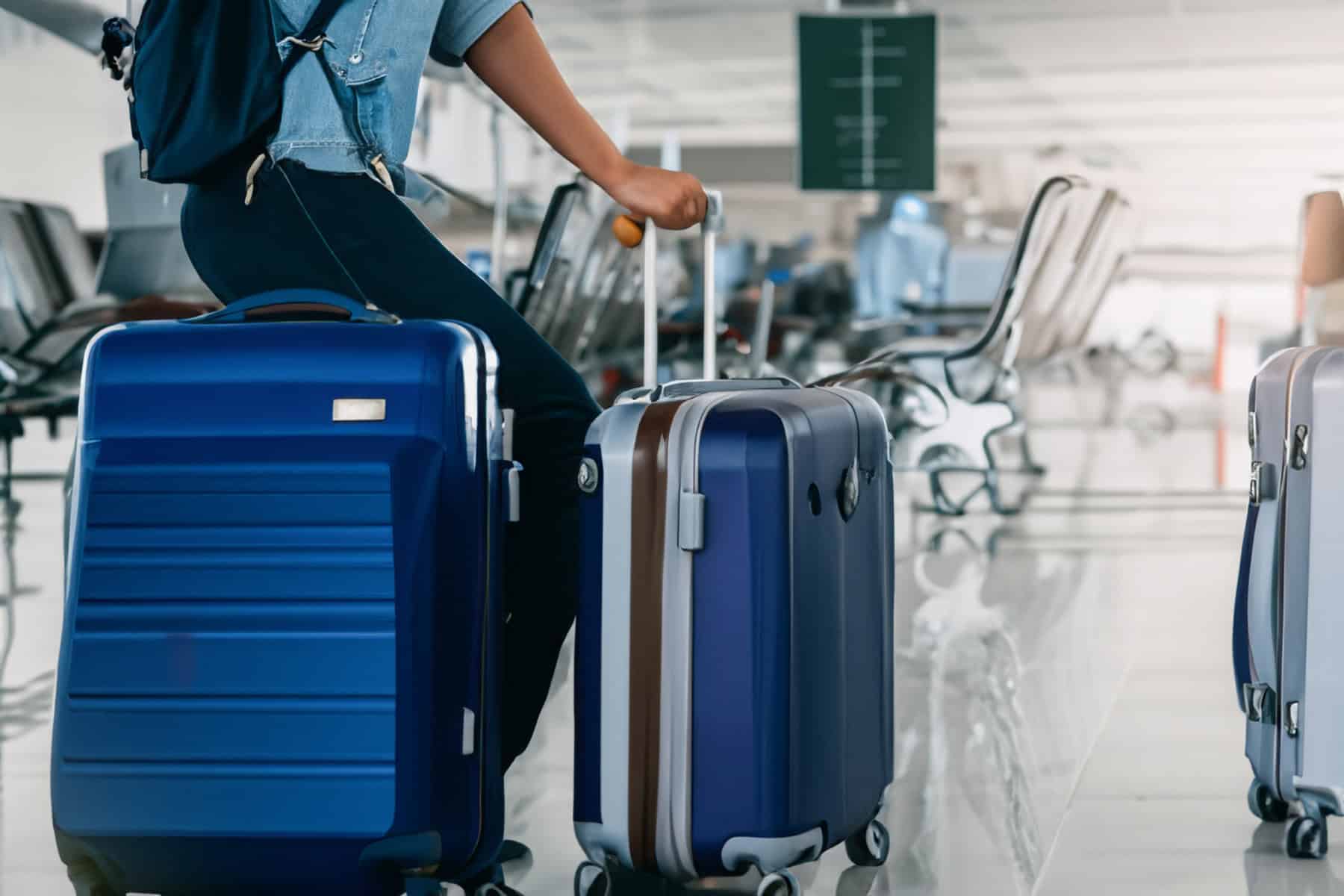
You might be thinking of only bringing carry-on luggage. If you’re only visiting the cities or resorts for a long weekend or a few days, packing light with just a carry-on can be doable.
However, if you’re planning on spending one week or more in Oman, you will probably want to travel with checked luggage – a bigger suitcase or backpack.
In my experience, exploring the country’s deserts and mountains as well as trying out a range of activities (like hiking, beach trips, and desert camping) requires more clothing and gear.
So, for a trip around Oman, your luggage options include:
- Hard-shell rolling Suitcase: Best for city stays or beach resorts, offering security and protection for your belongings.
- Soft-shell rolling Suitcase: Lightweight and flexible, good for packing a variety of items, and easier to store.
- Medium-size Backpack: Ideal for more active travellers who plan to explore nature, hike, or visit remote areas. It’s easy to carry and provides mobility. Keep in mind that in some villages in regions such as Jabel Akhdar, you will need to walk a distance from the 4×4 car to access the hotel.
- Duffel Bag: Great for packing light and being flexible with your luggage. It’s practical for adventurous travellers moving between different regions.
- Carry-on Luggage: Best for short trips to cities or resorts when you need to pack light.
The best option depends on your itinerary. If you’re focusing on the cities (Muscat, Nizwa, Sur) and staying in resorts, a hard-shell suitcase and a small carry-on backpack might work well. For more adventurous trips, especially if you plan on hiking or visiting rural areas, a larger backpack or duffel bag is more practical.
While travelling around Oman (by car or on internal flights), I have mainly opted for a combination of both a suitcase and a small day pack. I have found this offers the best flexibility and allows me to pack my laptop safely.
For shorter trips or for trips to the mountains, I have been using a sturdy backpack of medium size. I have made sure to choose one with lots of internal pockets so my phone (and laptop, if I bring it) are safe
To Protect Your Luggage
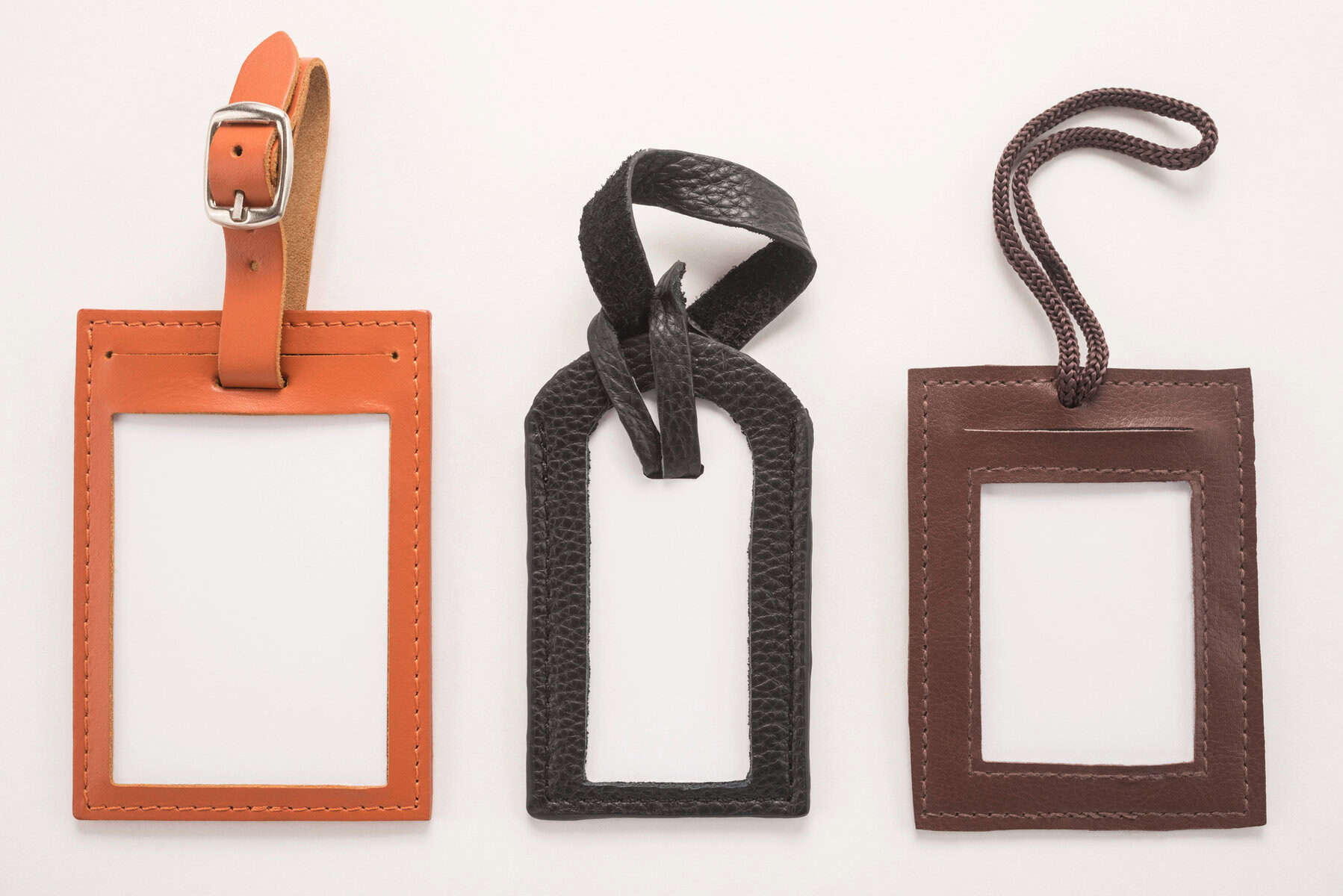
backpack locks – If your bag has outer compartments, wire locks help secure your zippers, especially when using shared transport like buses or domestic flights. While Oman is safe, keeping your valuables locked adds an extra layer of security.
Luggage tags – Essential for identifying your bags, especially if you’re flying into Oman’s busy international airport in Muscat or taking an internal flight to Salalah. If you’re travelling by local buses or shared taxis, having a tag makes it easier to spot your bag in a pile of luggage.
Waterproof luggage covers – These are made of PVC or an elastic type material and will completely cover your suitcase or backpack. Though Oman is mostly dry, the Khareef (monsoon) season in Salalah brings rain, and dust storms can happen in the desert. A cover also protects your bag from dirt when loading it onto buses or 4WD vehicles for off-road adventures.
Staying Organized
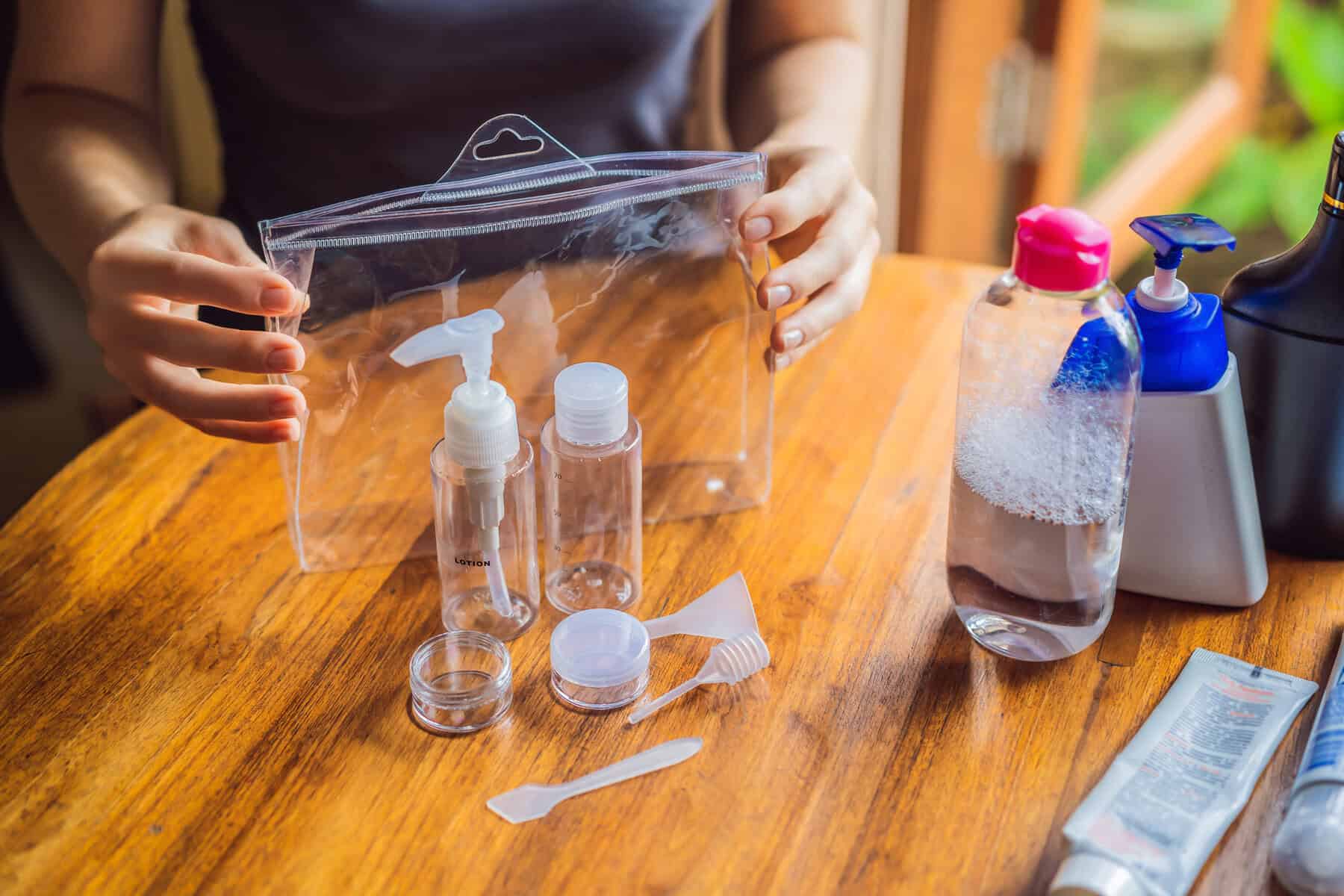
- Packing cubes – Helpful for keeping your clothes neatly packed, especially if you’re travelling between different climates (humid coastal areas, cool mountains, and hot desert). Opt for breathable cubes to prevent moisture build-up in humid regions. I love how packing cubes help me stay organized—no more rummaging through my suitcase to find a clean T-shirt!
- Canvas pouches – Ideal for organizing small electronics, camera accessories, or chargers. With Oman’s mix of desert, mountains, and coast, you’ll likely carry multiple gadgets for photography or navigation. Lightweight and dust-resistant pouches will keep your items safe and easy to find.
- Transparent zip-lock bag for toiletries – A must-have for airport security, but also great for keeping your liquids and essentials organized when travelling between cities. The climate in Oman means you’ll likely pack hydrating skincare and sun protection items, and having them in a clear bag prevents spills and makes them easy to access.
Pack for Oman: Essential Items
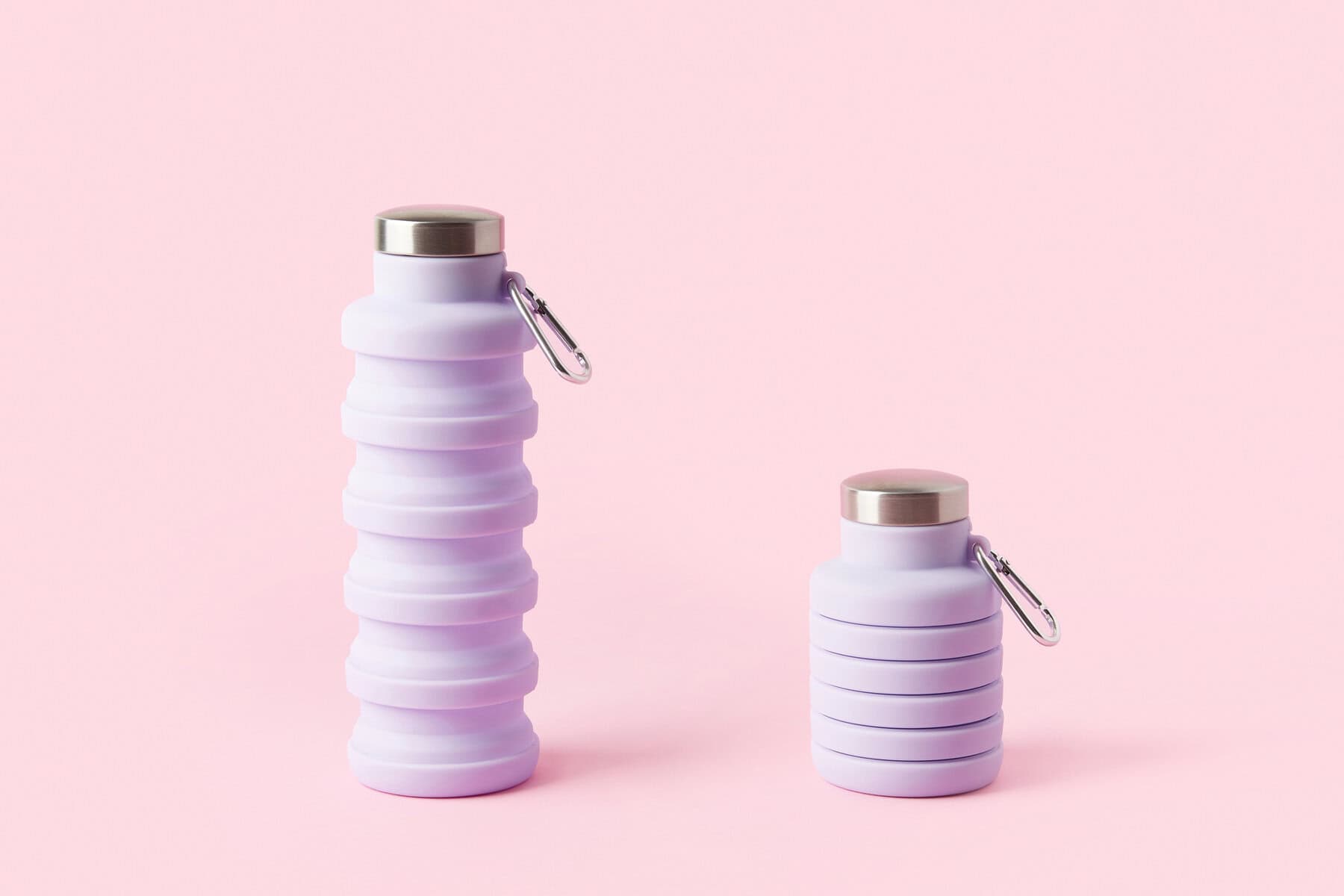
- Dry bag (small waterproof pouch) – I use this to protect my phone, wallet, and valuables when wadi swimming (a must-do in Oman’s wadis like Wadi Shab and Wadi Bani Khalid). Oman’s stunning wadis often require short swims or wading through water to reach caves and waterfalls.
- Microfiber quick-dry towel – Lightweight and useful for wadi swimming or beach visits.
- Shoe bags – If you plan to hike in Oman’s mountains or wadis, your shoes will likely get sandy or wet. A shoe bag keeps the rest of your luggage clean.
- Collapsible water bottle (with filter if needed) – Staying hydrated is crucial in Oman’s hot climate, and a collapsible bottle saves space. A built-in filter can be useful if you’re hiking in remote areas and might need to refill from natural water sources.
- Scarf – Versatile for sun protection, covering up in mosques, or staying warm in the mountains at night. I prefer cotton, linen or silk scarves as they work best for Oman’s climate.
- Power bank – Essential for long road trips and hikes, especially in remote areas where power outlets may not be available. During excursions, you’ll often spend long hours outdoors, away from charging points.
- Universal travel adapter (with USB ports) – Oman uses Type G sockets (same as the UK), so if you’re coming from elsewhere, don’t forget an adapter. One with USB ports is especially handy for charging multiple devices.
- A Laundry bag – for separating dirty clothes.
What to Wear in Oman: Tips for Men & Women
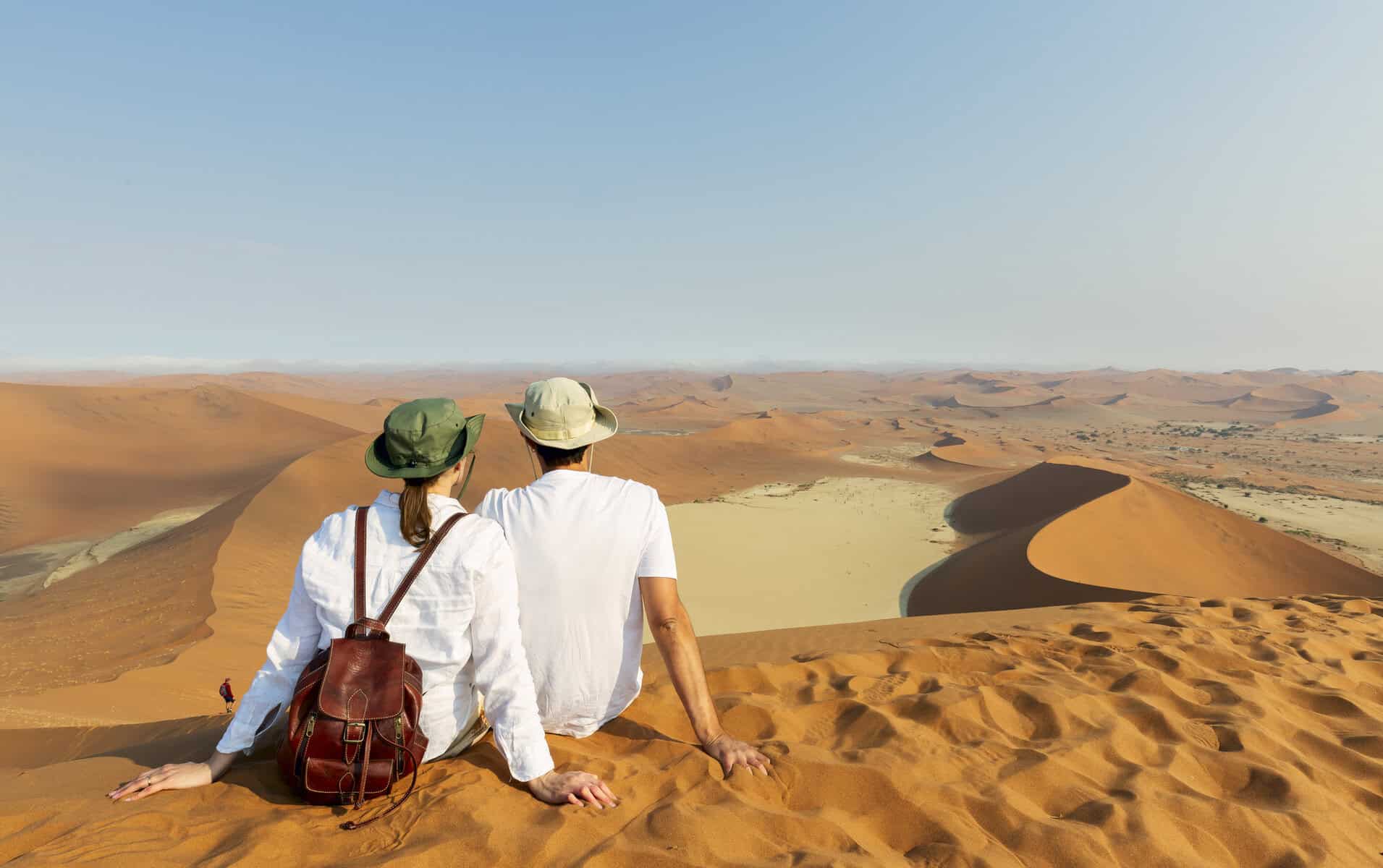
Packing for Oman depends on the season, cultural expectations, and the activities you plan to do. This guide focuses on essential clothing tips to help you pack appropriately for your trip.
Understanding the Dress Code in Oman
Oman is a welcoming and tolerant country, but it is also a conservative one when it comes to dress. I have come across information that states that in Oman there are no strict legal dress codes for visitors. Therefore, tourists can wear what they want. I have also read or heard that foreign women need to cover their hair. Both are incorrect.
What to wear in Cities
In Muscat and other urban areas, locals dress conservatively but stylishly. Women typically wear an abaya and a headscarf (hijab). Men usually wear a long robe (dishdasha) and a head cap. While tourists are not required to dress like locals, it’s best for women to wear loose-fitting clothing that covers their shoulders and legs. Men should wear long trousers and shirts with sleeves. Tight or revealing clothes, such as short shorts, crop tops, and low-cut tops, will attract unwanted attention.
What to Wear in Rural Areas & Small Towns
Outside the main cities, people tend to dress even more conservatively. In small towns and villages, it is definitely best for women to wear tops with long sleeves and long skirts/long-sleeved dresses or loose trousers. Men should wear long trousers rather than shorts.
What to wear when Visiting Mosques & Religious Sites
To enter a mosque, you must follow a strict dress code. Women need to cover their hair, arms, and legs completely. A long, loose dress or an abaya with a scarf is ideal. Men should wear long pants and a shirt with long sleeves. If you’re visiting the Sultan Qaboos Grand Mosque, abayas and scarves are available for rent at the entrance. I bring my own scarf and make sure I dress in an appropriate way. They do check thoroughly so you need to plan ahead. One more thing, it is more practical to wear shoes that you can easily remove.
What to Pack for Oman’s Climate
Oman’s climate is hot for most of the year, but temperatures vary by region and season. Here’s what to consider when packing:
What to Wear in Oman in Summer (April – October)
- Light & Breathable Clothing – Loose, long-sleeved tops and lightweight trousers will keep you cool and protect you from the sun.
- Long Skirts and Dresses in Cotton & Linen Fabrics – Natural fabrics like cotton and linen are best for dealing with the heat.
- Sunscreen & Hat/Cap – The sun is intense, so high-SPF sunscreen and a hat are essential.
- Sunglasses – A good pair of UV-protective sunglasses is a must.
- Comfortable Sandals – Sandals like Tevas work well for casual outings.
- Swimwear & Cover-Up – For women, bikinis are acceptable at private hotel pools and some beach resorts. But I recommend opting for a one-piece swimsuit and a cover-up for public beaches. You will avoid unnecessary stares.
- Pyjamas/Leggings
- Toiletries – Most hotels provide (at least) basic shampoo and soap but you may want to bring your own. I also always bring hydrating face and body creams.
What to Wear in Oman in Winter (November – March)
- Layered Clothing – The desert can be chilly at night, so pack a combination of long-sleeved tops and light sweaters or a fleece.
- If you plan to visit upscale restaurants, bringing a dressier outfit is a good idea.
- Warm Jacket – If you’re visiting the mountains (such as Jebel Akhdar), a warm jacket is necessary, as temperatures can drop significantly.
- Closed-Toe Shoes – water shoes are ideal for wadis and the beach.
- A big scarf or shawl – Useful for staying warm and for covering up when needed.
Packing for Hiking in Oman
When hiking in Oman, it’s essential to dress for both the heat and the rugged terrain.
- Footwear – Sturdy, closed-toe hiking shoes with good grip.
- A few pairs of socks
- Clothing: Lightweight, moisture-wicking long trousers and a loose-fitting, long-sleeved top.
- Sun Protection: a hat or cap, sunglasses, SPF lip balm and sunscreen (Factor 50 is a must).
- A map and compass
- A flashlight or headlamp – you may need it.
- Insect repellent. Very important especially if you’re also planning on camping.
Travel Essentials: Documents and Medication
Essential: make sure you bring with you all the necessary documents to enter the country:
- Your passport and a photocopy of your passport. Remember that your passport needs to be valid for at least another six months after your date of arrival.
- Your travel insurance documents: bring a printed copy of the card and have a digital copy available.
- A printed proof of your accommodation. They don’t always ask for this at customs but you need it.
- Your return ticket or ticket for onward travel
- Your wallet
- Your itinerary. Have a digital and printed copy with you (with information about places and dates, accommodation, activities planned)
- A list of emergency contacts. These should include phone numbers of a family member/friend to contact in your country if there is a problem as well as the numbers to call in Oman if you have an emergency (police, hotel, tour operator).
- Any medication you need. For over the counter medicine, it is better to have some basic pain killers with you. For prescribed medicine, it is very important to have the prescription with you, the amount you will need for personal use during your stay, and to bring the medicine in its original box.
- Keys. Keep your car and house keys in a safe place.
- Your mobile phone and charger.
- I-Pad or Tablet
- Camera
For more information on travel documents, you may want to check out my blog post on ‘Planning your best trip to Oman: 11 essential steps.’
To really enter the ‘travel mood’, you may also want to make your own ‘Creative Version of a Packing List’ for your Travel Sketchbook. Check this out here.
This packing list for Oman ensures your well-being. Do feel free to share your own experiences of packing or tips for others in the comments box.


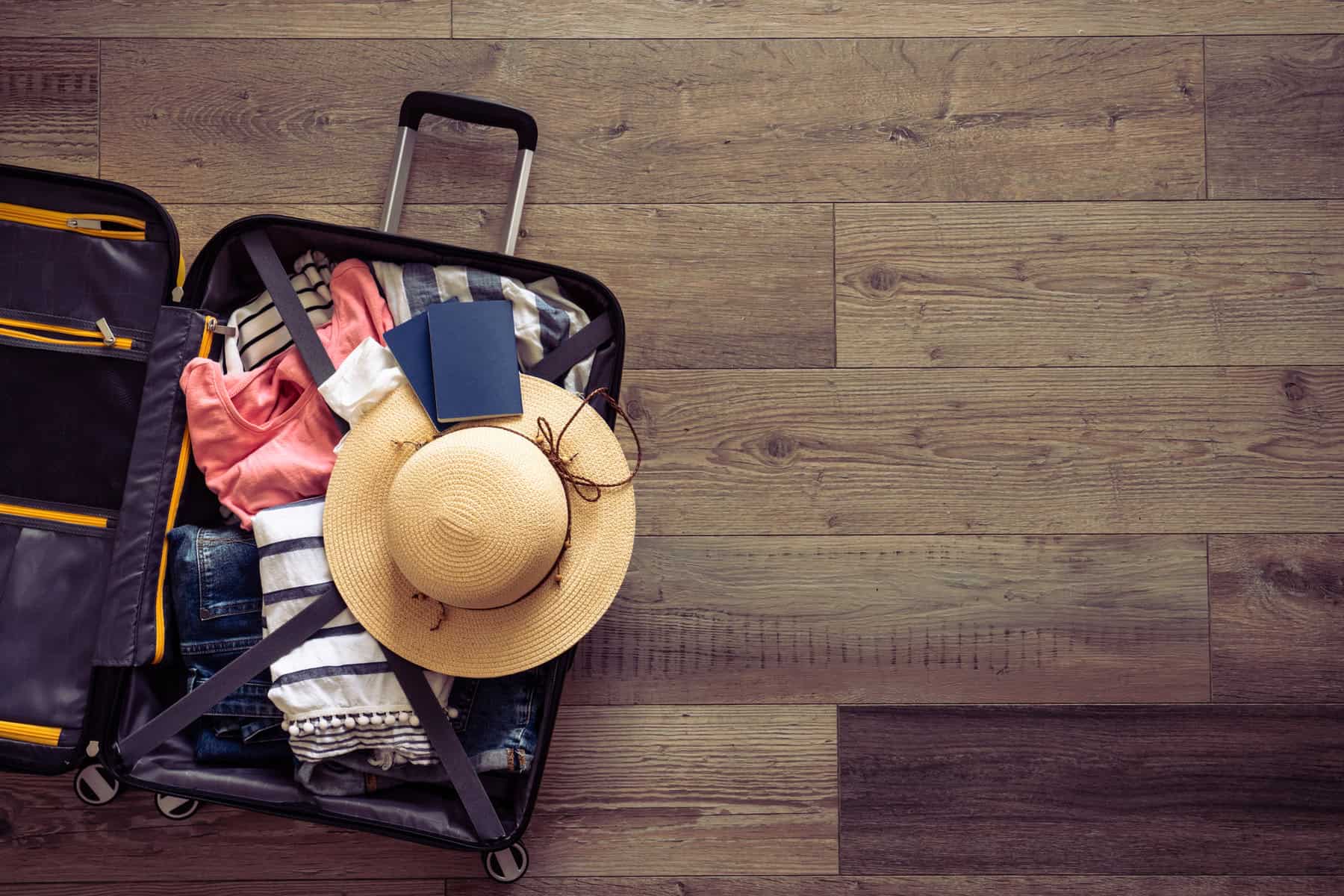
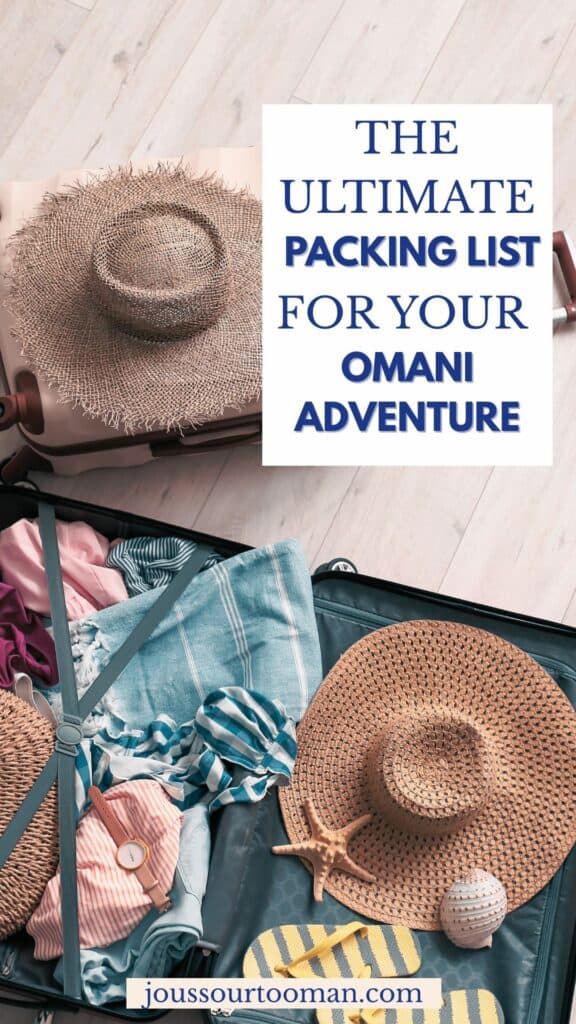
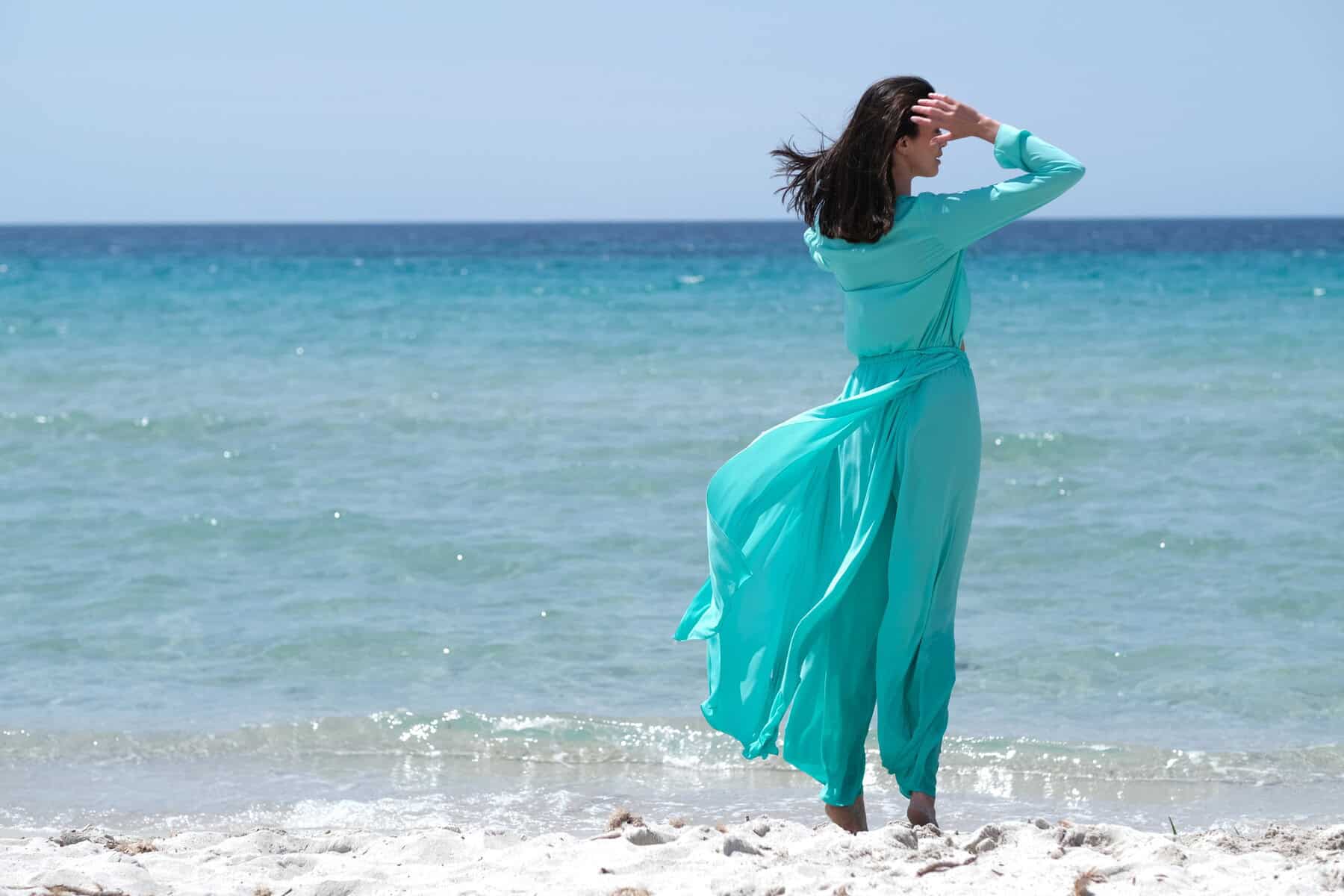
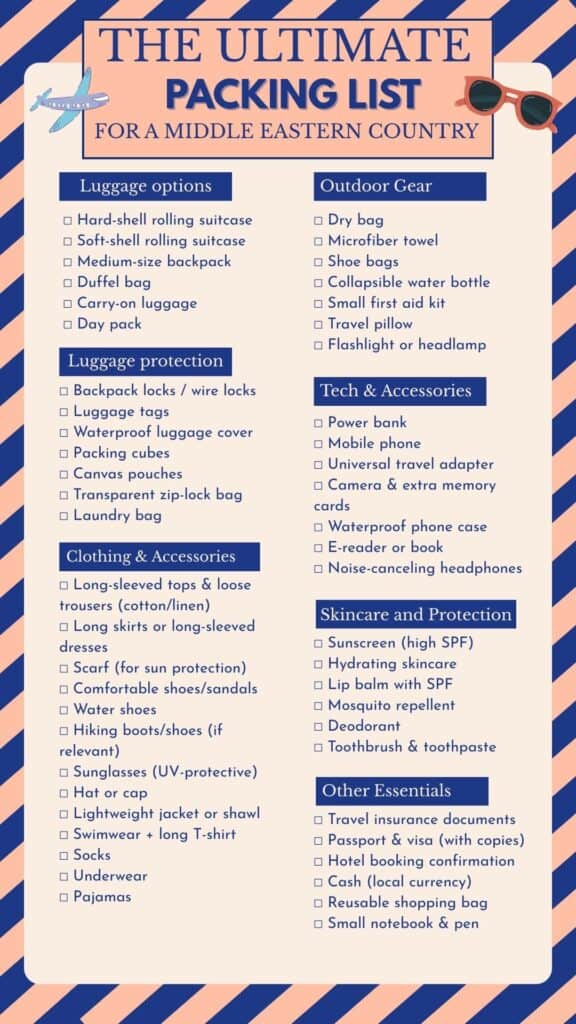

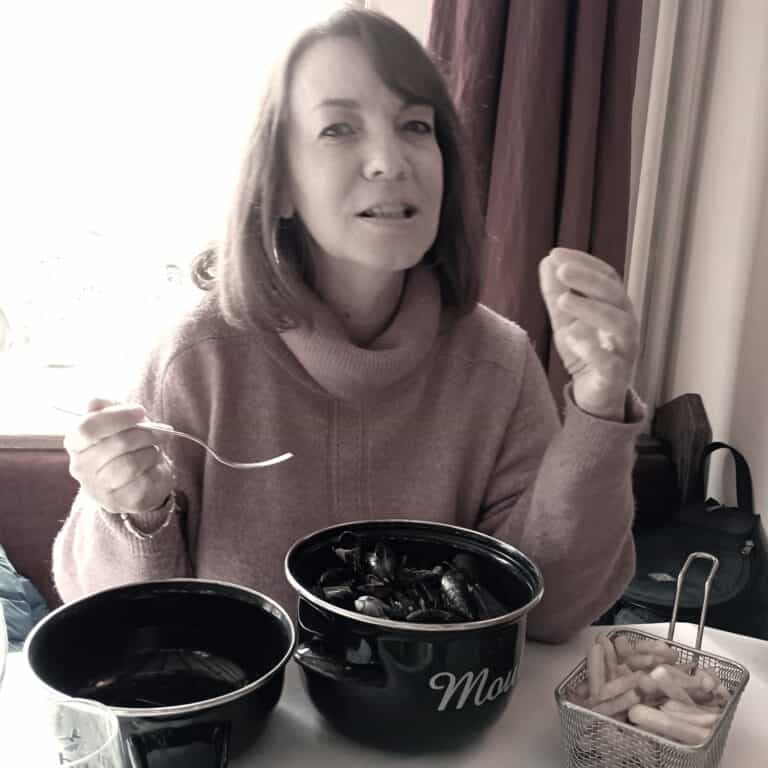



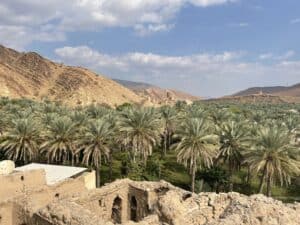

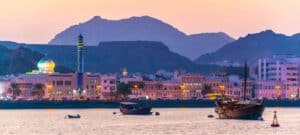
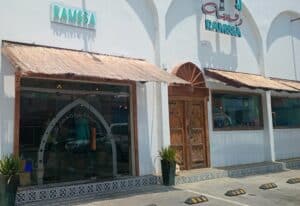


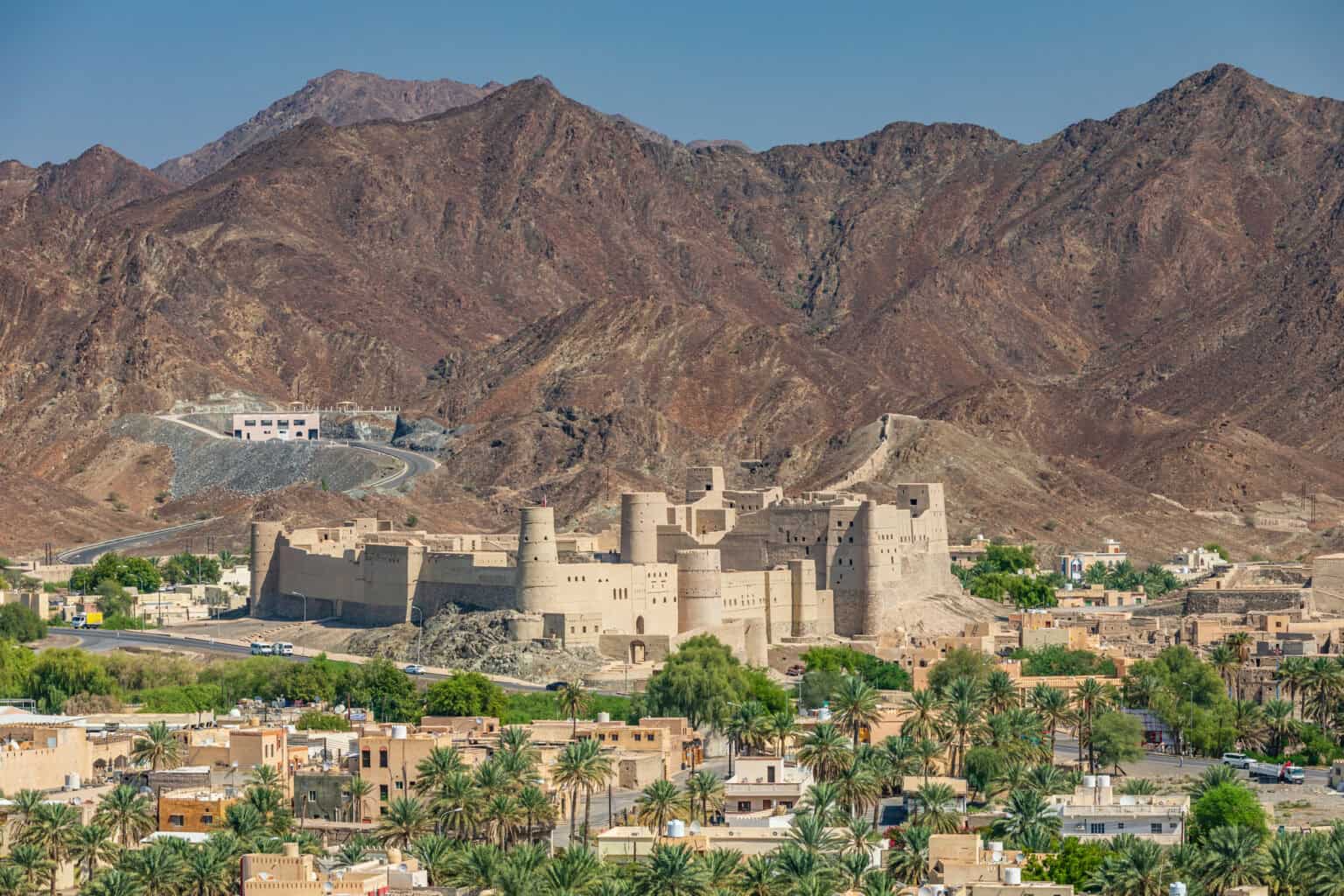
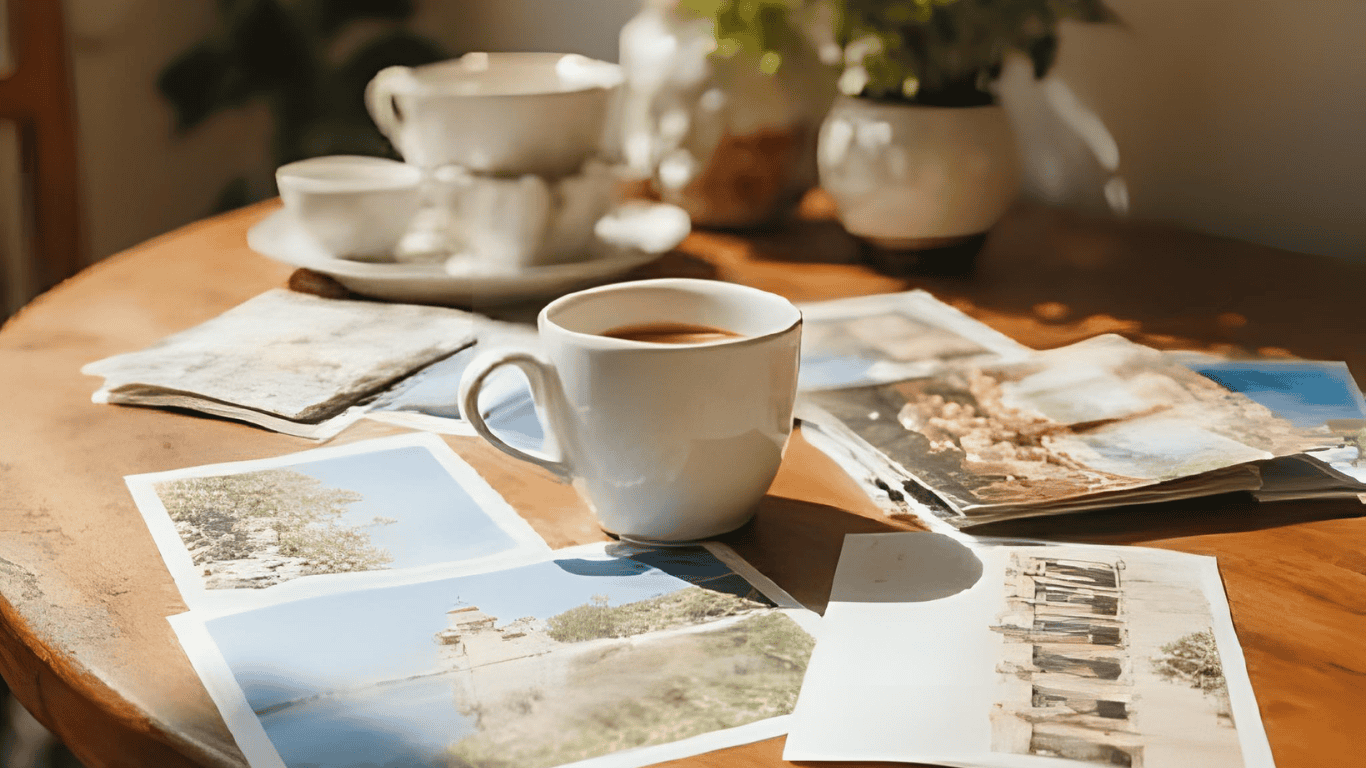
10 responses
Hello
Is there an app or a map showing the speed radars of Oman?
Estarei em Omã no final de setembro e suas informações me ajudaram muito na escolha do Hotel!
Obrigada Christine
Merci Christine pour ce temps passé à nous décrire comment se sentir comme chez toi, chez nous !
J’ ai voyagé encore !
À bientôt ✈️
C’est un plaisir, Anne. Vraiment!
Wow❤️
Thanks. If you need more information about accommodation in Muscat or other aspects of travelling in Oman, don’t hesitate to ask.
Hi Christine, thank you so much for the restaurant recommendation. I loved the food, the atmosphere and the place in general. I also talked to Khaled, the supervisor. He says hi. Thank you again. Tomorrow is my last day in Muscat. Any last minute must- see places?
Saliha from Algeria
Hello Saliha, Glad to hear you enjoyed the restaurant. In terms of Muscat, there are many options but some must-sees are Muttrah (the Corniche, Souq and Fort), Al Qurum (Shatti Al Qurum with its beach, the Opera building), and Old Muscat (the Royal Palace and gardens around, the Bait Al Zubair museum). I hope you get to see some of these. Have a great day!